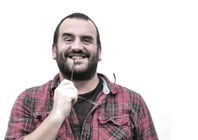After a chance conversation, Al Dean ponders the increase of functionality in today’s products and whether Internet of Things driven data could help us find where features and functions could be removed too
I’m just about to spend the next week installing a set of stairs in my two up, two down Victorian semi for a loft conversion I’ve been working on recently.
As anyone whose done this kind of work will know, it’s usually a case of fixing the mistakes made over the last 120 years before actually getting onto the work you want done. Something that has become clear is that houses used to be built in a much more straightforward manner.
No fancy materials, no heavy building regs requirements – nice and simple. Brick, wood and slate tiles – materials and construction methods that will last.
During the last few months I’ve discovered that spending time bagging up 100 years’ worth of dust, cutting wooden joists to size and generally getting your hands dirty is both almost zen in its nature (it clears the mind fantastically — or is that just me?), but also gives your brain enough space to think through things that might have been suppressed.
It was during one of these sessions that I thought through a comment I’d overheard at a recent PTC press event. It was made during a discussion about the rise of the Internet of Things (IoT) and the view that designers and engineers will soon have the potential to capture more information about how their products are used than ever before.

Al’s toaster. For a man that’s given up bread, it’s a bit over kill – and it comes with mystery buttons
The common thought is that these IoT systems will give us huge amounts of data to improve, incrementally but perhaps even revolutionise, how our products are built and subsequently used.
Much of the focus is on finding new things to do with our products, things that can make life easier or cheaper for the customers.
Then someone pointed out that the same systems, if used properly, could also show designers and engineers where features and functions aren’t used.
It was someone from PTC who pointed out that his last BMW had a button, whose purpose and function he had no idea about. And having recently replaced his car with the same make, low and behold, the same button is there but he still has no idea what it does. To my mind, that’s a curious thought.
Design and engineering often seem to focus on additive design. I don’t mean Additive Manufacturing, I mean, design with the purpose of adding new features and functions.
So, I started to think about this as I was digging around in my toolbox before strapping on the all essential knee pads (I’m not getting any younger, so don’t judge me).
If you take the mobile phone industry as an example, each generation of product from the various vendors, brings more and more features. Those new features and capabilities are discussed at length on the web, on twitter and judging by our sales director’s conversations he relays to us on conference calls, in the pub, as well.
But have you ever looked into every feature and function of the device in your hand or pocket? Chances are probably not.
The same is true of most of the appliances in your home so why does all this functionality exist in the first place?
Someone obviously thought they were a good idea. That idea got signed off, developed, tested and implemented.
Whether that’s the voice recorder in iOS (something I do actually use) or the button on your toaster (not the defrost one, the other one).
A design decision was made and there was money spent all for people to never push that button or icon and for it to eventually end up in landfill with its use never being known.
So, to close out the thought circle, if we are on the cusp of being able to capture more data about how products are used and which features and functions are used the most or even which are used incorrectly, isn’t it the case that we should be able to find those that are never used?
Whether that’s a hardware switch or function, a chunk of software code or a combination of the two, if it’s not being used and nothing else relies on it, could we consider removing it? Those features cost money to implement and money to maintain. Perhaps we could lose them and no-one would ever notice.
Right, I’m off up the loft again. This thing won’t do itself and I’ve got stairs being delivered any day now.
Oh, and that button on the toaster. It’s for bagels. Fancy. Still not pushed it. One day, eh?
Al Dean ponders the increase of functionality in today’s products
Default






